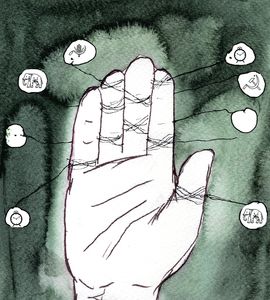Now that everyone has had his or her say about Karnataka, let me get in my two bits. It seems to me that unless something goes drastically wrong between now and the Lok Sabha elections, historians of the Modi-Shah regime are going to record the Karnataka outcome as the inflexion point when the end of their regime in New Delhi was signalled.
First, in Karnataka, Modi-Shah did not win the popular vote. They scored 36 per cent against 38 per cent of the Congress. So, their not winning a majority of seats on their own marks the end of the beginning they made in the 2014 Lok Sabha elections by winning enough seats. In 2014, the BJP’s share of the popular vote was just 31 per cent. Therefore, it was not the BJP that won the elections; it was the opposition that lost it by fractionating the non- and anti-BJP votes.
Ergo, if the opposition unites even a part of the electorate, that voted close to 70 per cent against Modi in his golden year of 2014, he and Shah can be consigned to the dustbin of history.
Provided, however, there is a clear appreciation by the Congress, and the opposition in general, of the facts on the ground. The most important of these facts is that while the Congress is the principal opponent of the BJP in some states in west and central India, virtually everywhere else it is state-based parties that are holding the BJP at bay: the Dravidian parties in Tamil Nadu; the TDP in Andhra Pradesh; K. Chandrashekar Rao in Telangana; Naveen Patnaik in Odisha; Mamata in West Bengal; Lalu and his son Tejashwi in Bihar; the AAP in Delhi; and, above all, Mayawati and Akhilesh together in Uttar Pradesh. In other states, the Congress needs local partners to keep the BJP wolf from the door: the NC and perhaps even the PDP in Jammu and Kashmir; the Ajmal brothers’ AIUDF in Assam; the JMM in Jharkhand; the UDF in Kerala; and the JD(S) in Karnataka. In the northeast states, we have an alphabet soup of local parties in partnership with whom either the Congress or the BJP could hold sway. The left front would probably wish to keep its identity intact. But, eventually, as in 2004, they would support the secular forces. This highly nuanced scenario points to the need to establish opposition unity state-wise.
The key lesson here is that the more the space given by the Congress to its partners, the more likely is a nation-wide gathering together of the anti-BJP forces. In other words, the Congress must “stoop to conquer”. This, the Congress leadership seems ready to do.
Next, the question of leadership. Modi will do his best to convert this into a presidential model election—Modi vs the rest. The alliance must ensure that the field of electoral battle remains parliamentary—the BJP vs the alliance.
While the arithmetic clearly indicates an overwhelming victory for the alliance, the chemistry, too, must be put in order. Despite his promise of “cooperative federalism”, the Modi regime has emerged as highly centralised, highly personality-driven, and highly autocratic, riding roughshod over state aspirations. The alliance programme must therefore be aimed at decentralising the bulk of social welfare and economic development programmes to the states, municipalities and panchayats. Federalisation of these activities was envisaged by the founders of the Constitution, which is why almost all such subjects were placed through the seventh schedule in the domain of the states. But, the structuring of the taxation system so skewed matters that the devolution of finances was not symmetrical to the devolution of functions. In consequence, the Centre took up many of these responsibilities through centrally-sponsored schemes.
The Centre-state balance needs to be rectified. That should be the USP of the alliance.
Aiyar is a former Union minister and social commentator.


